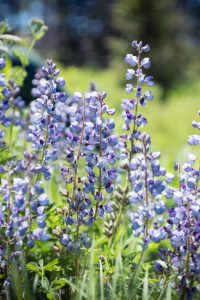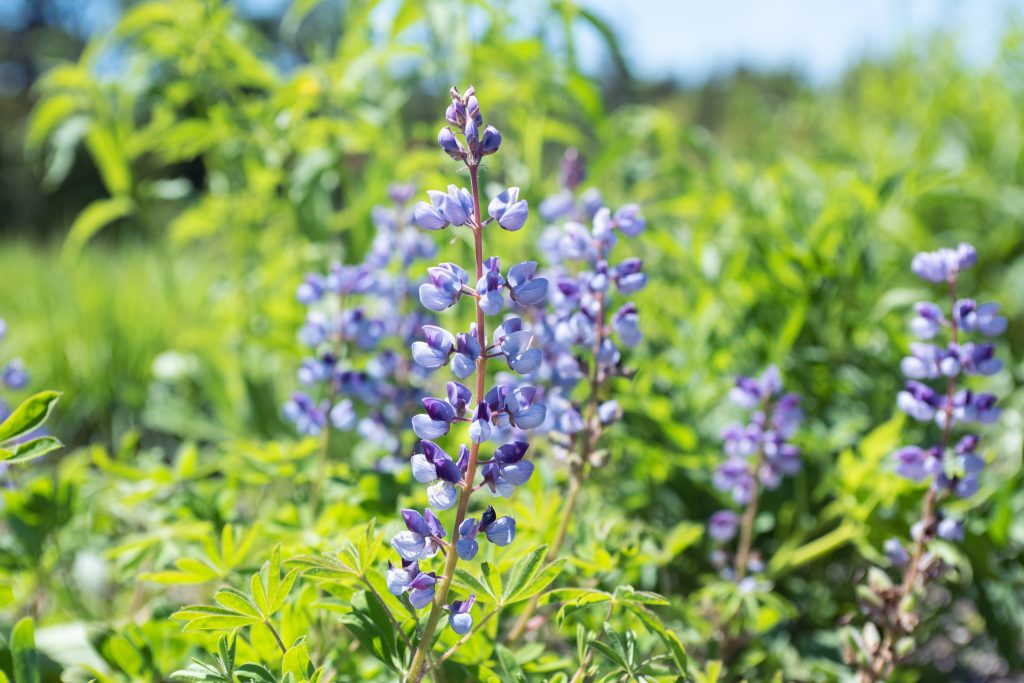Maine is known for its iconic coastline, lobsters (of course), blueberries, and, come summer, fields and fields of lupine. And while there is a species of lupine that was native to Maine, Lupinus perennis, or sundial lupine, this species is now considered to be possibly locally extinct (known as extirpated to naturalists) from Maine.
Maine’s True Lupine

To visitors and Mainers, common or big leaf lupine (Lupinus polyphyllus) is one of our most iconic wild plants. Often spotted throughout Maine along roadsides, in wild areas, and in books and paintings, it may come as a surprise that this lupine is not native to Maine but to the West Coast.
Maine lists big leaf lupine as “potentially Invasive” on the Maine Natural Areas Program Advisory List. An invasive plant is not native to a region and will likely cause environmental and economic damage once introduced. Because of this, here at the Gardens, we are gradually removing all big leaf lupine to protect our wild natural communities and inspire conversations around invasive plants. We are also removing its seedlings in the gardens and deadheading flowers to prevent their spread as we remove the existing plants.
Big leaf lupine and its hybrids are common garden plants with steadfast devotees. But if you love lupine and live in Maine, the best way to enjoy these beautiful plants would be to plant the sundial lupine in your garden. Though smaller than their big leaf relatives, sundial lupines are delicate and beautiful, and the pollen is popular with mining, mason, and bumble bees. They’re also the only larval host plant for the endangered Karner blue butterfly (Plebejus melissa) extirpated in Maine but the official state butterfly of neighboring New Hampshire.
In Maine, your best bet for sourcing these rare perennials is Wild Seed Project. You can check out sundial lupine seeds here, which are in stock seasonally.

